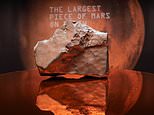Science
Harvard Scientist Claims ‘Hostile’ Object Approaches Earth

An interstellar object named 3I/ATLAS is heading towards the inner solar system at remarkable speeds, raising eyebrows among researchers. Detected on July 1, 2025, the object is estimated to be 12 to 15 miles wide and is moving at approximately 135,000 miles per hour (217,000 kilometers per hour). The trajectory of 3I/ATLAS is highly unusual, prompting speculation about its origins and purpose.
This object is the third confirmed interstellar entity observed in our solar system, following 1I/ʻOumuamua in 2017 and 2I/Borisov in 2019. Initial assessments indicate that 3I/ATLAS is significantly larger than its predecessors, with a diameter estimated at around 7 miles (11 kilometers). It is projected to reach perihelion, its closest point to the Sun, on October 30, 2025, or early November 2025. Its inbound path includes gravitational interactions with Venus, Mars, and Jupiter, which has prompted additional scrutiny from the scientific community.
Controversial Theories Spark Debate
A paper by Harvard astrophysicist Professor Avi Loeb, along with researchers Adam Hibberd and Adam Crowl, has stirred significant controversy. Titled “Is the Interstellar Object 3I/ATLAS Alien Technology?”, the study suggests that the object may not be a natural formation but rather a technological artifact of extraterrestrial origin. The researchers argue that the object’s flybys could be intentional maneuvers aimed at deploying observational or reconnaissance devices.
In the paper, Professor Loeb describes the object as a potential “hostile” probe. Yet, he acknowledges that “by far, the most likely outcome will be that 3I/ATLAS is a completely natural interstellar object, probably a comet.” This admission highlights the dual nature of the hypothesis surrounding 3I/ATLAS, which has drawn both intrigue and skepticism.
Critics within the scientific community have largely dismissed the notion of an alien probe. Chris Lintott, an astronomer at the University of Oxford, termed the idea “nonsense on stilts” in correspondence with Live Science. Similarly, Dr. Samantha Lawler of the University of Regina remarked that “the vast majority of scientists subscribe to the idea that extraordinary claims require extraordinary evidence, and the evidence presented is absolutely not extraordinary.”
Many astronomers point out that 3I/ATLAS exhibits no signs of propulsion, targeted trajectory changes, or radio emissions that would indicate an artificial origin. Observations have confirmed the presence of a visible coma, a characteristic feature of comets that aligns with expected behavior for such objects.
Future Observations and Safety Concerns
As 3I/ATLAS approaches perihelion, it is expected to pass on the far side of the Sun, which may limit direct observation during its closest approach. Nevertheless, telescopes and space agencies, including NASA and the European Space Agency, are actively tracking its trajectory and behavior. Researchers are preparing to analyze the object’s outgassing, light reflection, and any potential electromagnetic signatures that may emerge as it nears the Sun.
At its closest point, 3I/ATLAS will maintain a safe distance of approximately 149 million miles (240 million kilometers) from Earth, posing no immediate threat to our planet. As more data becomes available, scientists hope to definitively determine whether 3I/ATLAS is a natural interstellar traveler or something far more enigmatic.
Science
New Study Reveals Wetlands’ Critical Role in Carbon Storage
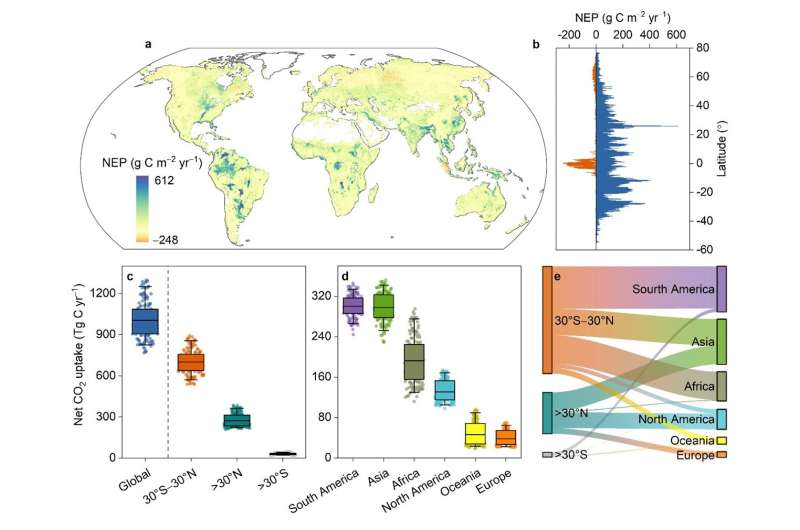
A recent study led by Prof. Ding Weixin from the Chinese Academy of Sciences has unveiled significant findings regarding the role of wetlands in global carbon sequestration. The research, published in the journal Nature Ecology & Evolution, emphasizes the necessity of incorporating wetland dynamics into global carbon budget models to improve climate change response strategies.
Wetlands, though covering only 3% to 13% of Earth’s land surface, are responsible for storing more than 30% of global soil carbon. Despite their importance, the spatiotemporal patterns of wetland carbon uptake have not been adequately quantified. This gap has hindered the development of effective wetland management policies and accurate estimations of land carbon sinks.
To address this issue, the research team utilized a newly developed dynamic global wetland water level dataset to assess carbon sequestration from 2000 to 2020. They compiled a total of 934 in situ observations from 258 peer-reviewed publications and the FLUXNET database. Their analysis revealed a global mean wetland net ecosystem production (NEP) of 56.4 g carbon m ‒2 year ‒1.
Key Findings on Carbon Sequestration
The study estimated that global wetland carbon sequestration averaged 1,004 Tg carbon annually during the 20-year period, with tropical wetlands contributing a significant 70% of this total. South America, Asia, and Africa emerged as the top three continents for wetland carbon sequestration, collectively accounting for 79% of global totals.
Notably, the study identified a decline in global wetland carbon sinks until 2005, followed by a recovery phase. Overall, carbon sequestration remained relatively stable over the two decades, with increases in northern mid to high latitudes counterbalancing declines in tropical and southern mid to high latitudes.
At a continental level, wetland carbon sequestration in South America decreased throughout the study period, which offset gains made in Africa, North America, Asia, and Europe.
Impact of Climate Change on Wetland Carbon Sinks
The researchers indicated that changing hydrology is a primary driver behind the increasing regional variability in wetland carbon sinks. The intensification of hydrological extremes, attributed to climate change, poses a risk to the resilience of these carbon sinks and the ecosystem services they provide.
Additionally, the study highlighted that terrestrial carbon sink growth rates have slowed, dropping from 0.075 Pg C yr ‒2 during 1980-1999 to 0.037 Pg C yr ‒2 from 2000 to 2020. The findings suggest a positive correlation between global wetland carbon uptake and terrestrial carbon sinks, explaining 33% of the temporal variations in terrestrial carbon sinks.
These results provide fresh insights into the dynamics of wetland carbon sequestration, emphasizing its role in moderating the growth of global terrestrial carbon sinks in recent decades. The research contributes valuable data to global carbon evaluation reports, including those from the Intergovernmental Panel on Climate Change.
In summary, the findings from this comprehensive study underscore the critical importance of wetlands in managing carbon emissions and highlight the need for informed policies that support wetland conservation and restoration.
Science
Tropical Fish Adapt to New Environments with Local Species

Scientists have discovered that tropical fish migrating to temperate oceans due to increasing ocean temperatures are thriving better when they associate with local species. This finding highlights the importance of social learning in new environments, particularly as climate change continues to reshape marine ecosystems.
Research conducted by a team of marine biologists focused on how tropical fish, previously confined to warmer waters, adapt to their new habitats. The study emphasizes that these fish learn vital survival behaviors from native species, enhancing their chances of thriving in unfamiliar territories.
Social Learning Plays a Key Role
The research, published in the journal *Ecology Letters*, highlights the significance of social interactions among fish. By observing and interacting with local species, tropical fish can acquire essential skills, such as foraging techniques and predator avoidance strategies. This process of social learning is particularly crucial as fish face the challenges posed by rapidly changing ocean conditions.
The study examined various tropical fish species that have expanded their ranges into temperate waters, driven by global warming. Researchers observed how these fish formed mixed-species shoals with native fish. These interactions led to improved survival rates compared to those fish that remained isolated from local populations.
Strong evidence from the research indicates that fish that engage with local species are more adept at adapting to their new environments. For instance, tropical species that learned from temperate neighbors demonstrated better foraging efficiency, which is vital for their survival in the wild.
Implications for Marine Conservation
These findings carry significant implications for marine conservation efforts. As ocean temperatures rise, the movement of tropical fish into temperate regions could alter existing marine ecosystems. Understanding how these interactions influence fish behavior and survival can inform strategies to support biodiversity and ecosystem health.
Researchers stress the need for continued monitoring of these shifts in fish populations. By recognizing the patterns of migration and adaptation, conservationists can develop more effective management practices to protect both tropical and native species in changing environments.
This research not only sheds light on the resilience of tropical fish but also emphasizes the interconnectedness of marine ecosystems. As climate change progresses, the ability of species to adapt through social learning could be a crucial factor in their survival.
With the ongoing impact of global warming, the findings underscore the urgency of addressing climate change and its effects on marine life. Collaborative efforts between scientists, policymakers, and conservationists will be essential in navigating the challenges ahead for our oceans.
Science
Tom Driscoll on Clear Communication and the Future of Radar Tech

Tom Driscoll, founder and chief technology officer of the Seattle-based firm Echoydne, emphasizes the importance of clear communication in the tech industry. With a PhD in physics from the University of California, San Diego, Driscoll has dedicated his career to developing radar technology using metamaterials for both commercial and defense applications. His previous role as managing director of the Metamaterials Commercialization Center at the technology incubator Intellectual Ventures has further shaped his perspective on the challenges of effective communication in complex fields.
Driscoll believes that the difficulty of communicating technical concepts is often underestimated. He asserts, “Crafting clear communication is something that I try to give extra time and attention to myself.” This commitment extends to his team at Echoydne, where he encourages open dialogue and clarity in discussions surrounding technology and product development. As the company navigates advancements in radar technology, Driscoll sees every task, regardless of size, as a vital contribution to creating a safer world in the face of increasing threats from autonomous weapons.
While Driscoll is passionate about his work and the talented individuals he collaborates with, he openly shares his frustration with PowerPoint presentations. He describes it as “the least effective and most time-consuming ways of communicating ever created.” Despite this sentiment, he acknowledges the necessity of adapting to customers’ preferences, which often means using PowerPoint in business settings.
Reflecting on his journey in the hardware start-up realm, Driscoll notes that anyone who believes developing a product will take only three to four years is misinformed. He describes the past 11 years as an incredible learning experience, stating, “I believe that learning things is often more valuable than knowing things.”
Driscoll’s insights highlight a broader issue in the tech industry: the need for clear and effective communication, particularly as teams expand and projects grow in complexity. His perspective serves as a reminder that no matter the advancements in technology, the human element of understanding and communication remains crucial.
If given the opportunity to revisit his early career, Driscoll expresses a desire to make adjustments. Yet, he firmly believes that the learning process is invaluable, stating, “Would I hand myself a cheat-sheet that let me skip all the learning? Absolutely not!” This commitment to growth and clarity reflects not only his personal philosophy but also the culture he aims to foster within Echoydne.
Science
Insmed Launches Innovation Centre to Advance Genetic Therapies
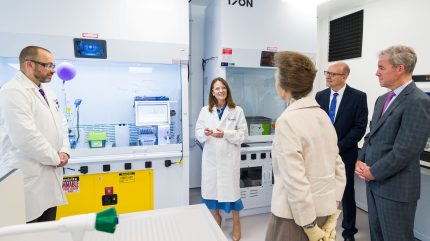
Insmed, a US-based biopharmaceutical firm, has officially launched its innovation centre at the Babraham Research Campus in Cambridge, UK, marking a significant step in its pursuit of advanced genetic therapeutics. The facility, which spans 17,000 square feet, was inaugurated in mid-July 2025 with a ceremony attended by Her Royal Highness, The Princess Royal. This new hub is pivotal to Insmed’s strategic shift towards synthetic rescue, a revolutionary approach aimed at manipulating cellular pathways to restore normal function.
Leading this initiative is Dr Tom Heightman, Senior Vice President and Head of Research at the Cambridge site. With over 25 years of experience in the pharmaceutical industry, Heightman has previously held key positions at major companies such as GlaxoSmithKline and AstraZeneca. He played a crucial role in transforming Adrestia, which was acquired by Insmed in 2023. Heightman highlighted the synergy between the two companies, stating, “Our early-stage target discovery and drug discovery platform was well suited to Insmed because they wanted to invest some of their clinical success in building a longer-term pipeline.”
Innovative Approach to Rare Diseases
Synthetic rescue is positioned as the opposite of synthetic lethality, a concept prevalent in oncology. While synthetic lethality involves two gene disruptions that lead to cell death, synthetic rescue aims to identify alternative pathways that can restore health when a critical gene is compromised. Insmed’s platform combines whole-genome CRISPR screens, high-throughput validation, and extensive human genetic data analysis with computational drug design.
Heightman describes this combination as their “secret sauce.” He elaborated, “What makes this facility unique is two-fold. First, the synthetic rescue platform itself. Second, the ability to execute end-to-end drug discovery in one place: genetic discovery, data science, computational chemistry and wet-lab synthesis.” Although currently consisting of around 80 staff, Insmed has integrated various scientific disciplines under one roof, a rarity for a company of its size.
The focus of the Cambridge team is on rare genetic disorders, particularly those affecting the central nervous system and neurodegenerative diseases. Heightman noted, “Synthetic rescue has broad applicability. It’s why both Adrestia and the Insmed leadership were drawn to it.” With nearly 7,000 recognized rare diseases, many lacking a clear mechanistic understanding, traditional drug discovery methods can be ineffective. Instead, the Cambridge team is developing assays and cell models from the ground up to deepen their understanding of the underlying biology and the impact on patients.
Collaboration and Future Prospects
Insmed’s Cambridge facility complements its other research sites in San Diego, New Hampshire, and New Jersey, each specializing in different modalities. San Diego focuses on gene therapy, New Hampshire on biologics, and New Jersey on lipid-formulated small molecules. Heightman explained that these sites operate as semi-independent hubs with specific focuses but convene every six months for a cross-site symposium to share breakthroughs and foster collaboration.
The company is also planning to optimize the use of capital-intensive equipment across its research hubs to minimize redundancy and leverage advanced tools effectively. Heightman noted promising progress in various early-stage projects during the first half of 2025, with the current objective of generating preclinical data to advance discoveries toward potential prototype medicines. “We intend to make this scientific second half of the year very rich – more data, more clarity on molecules moving through preclinical development,” he expressed.
In addition to internal collaboration, Insmed is promoting interaction between researchers and clinicians. Heightman remarked, “We’re starting to see clinical teams ask us questions where someone within our research groups has the right expertise to help. So, there’s a valuable two-way exchange, rather than just one-way communication.”
While artificial intelligence (AI) increasingly plays a role in drug discovery, Heightman maintains a cautious perspective. He stated, “It works best in areas where we have deep datasets, so now we’re seeing success in specific, well-defined problems. The hope is that future generations of AI will be able to integrate different data types more holistically, but for now, I think we still need human scientists to drive the process.”
Despite facing operational losses, Insmed continues to support its ongoing projects, including brensocatib for bronchiectasis, which is being financed through public market fundraising. In June 2025, the company announced a public offering worth $750 million to fund research and commercialization, reflecting strong investor confidence in its direction.
As Insmed solidifies its position in the UK’s life sciences sector, its commitment to synthetic rescue represents a broader shift in the approach to genetic diseases. While the science is still in its nascent stages and significant challenges remain, Insmed’s strategy of consolidating diverse capabilities under one roof positions it to explore these complex questions effectively. The viability of synthetic rescue will ultimately depend on the data generated and how successfully these insights can be transformed into meaningful treatments for patients.
-

 Politics2 weeks ago
Politics2 weeks agoPlane Crash at Southend Airport Claims Four Lives After Takeoff
-

 Top Stories2 weeks ago
Top Stories2 weeks agoAustralian Man Arrested for Alleged Damage to Stone of Destiny
-

 Business2 weeks ago
Business2 weeks agoNew Study Links Economic Inequality to Lower Well-Being Globally
-

 Business2 weeks ago
Business2 weeks agoTrump’s “One Big Beautiful Bill” Faces Economic Scrutiny
-

 Sports2 weeks ago
Sports2 weeks agoSheffield United’s Young Talent Embraces Championship Opportunity
-
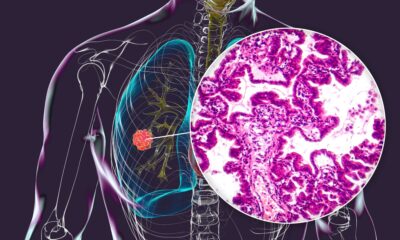
 Health2 weeks ago
Health2 weeks agoAI Tool EAGLE Streamlines Lung Cancer Mutation Detection
-

 Lifestyle2 weeks ago
Lifestyle2 weeks agoBrits Identify Adulting Challenges: Cleaning, Cooking, and Time Woes
-
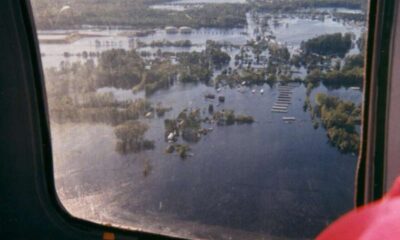
 Science2 weeks ago
Science2 weeks agoStudy Reveals Widespread Flooding in North Carolina Exceeds Expectations
-

 Sports2 weeks ago
Sports2 weeks agoEverton Pursues Johan Bakayoko as Transfer Deadline Approaches
-

 Politics2 weeks ago
Politics2 weeks agoUncertain Future for The Royal Albert Pub as Landlord Departs
-
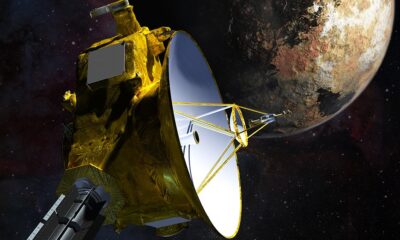
 Science2 weeks ago
Science2 weeks agoNASA’s New Horizons Demonstrates Innovative Star Navigation Method
-

 Top Stories2 weeks ago
Top Stories2 weeks agoProtests Erupt in Niksic as Officials Celebrate Controversial Events

